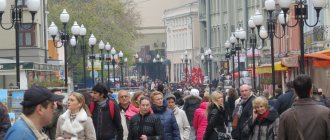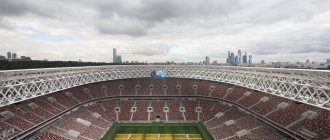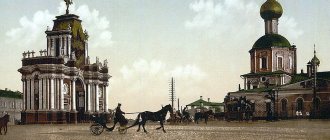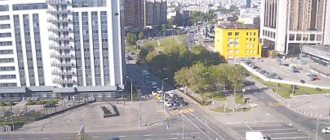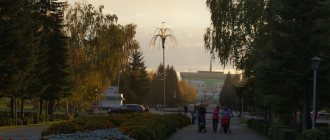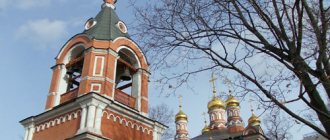Embalming Lenin's body
After his death, Lenin's body was traditionally embalmed for a short period of time and an autopsy was performed to determine the exact cause of death. Academician A. Abrikosov, who did not imagine that the body would be stored for decades, used the usual composition of formaldehyde, glycerin, ethyl alcohol and several other components.
Also, during the autopsy, he cut all the large vessels in Lenin’s body, which later became one of the main problems in the development of a new embalming composition.
After all the procedures, the “leader” was transported to Moscow. The coffin with him was installed at the House of Unions so that everyone could say goodbye to the deceased. The safety of the body for the next few days was ensured by the works of A. Abrikosov and the severe frosts that were then in the capital.
Interesting fact! There was an honor guard at the coffin, which changed every 10 minutes. In total, 9,000 people visited it.
What prompted the country's leadership to preserve the body of V.I. Lenin is not known for certain. Either numerous requests from workers, or a desire to consolidate the state ideology and increase the authority of the ruling elite. As a result, the funeral was repeatedly postponed due to the inexhaustible stream of people bidding farewell to the leader of the world proletariat.
When it became impossible to do this further due to the poor condition of the body, anatomist V. Vorobyov and biochemist B. Zbarsky . It was thanks to their labors that V.I. Lenin’s body was preserved for decades.
The first wooden mausoleum
To bid farewell to Lenin, it was decided to build a temporary mausoleum on Red Square. The order for its construction was received on January 24, 1924 by the architect A. Shchusev. He was given only 3 days to work, noting that the construction should be solemn, but not pretentious, fitting into the architectural ensemble of Red Square. It took Shchusev only one night to develop the project, after which he began construction.
Arkhangelsk pine was used as the main material , and black oak was used to create decorative elements. About 100 people were involved in the work, who were periodically joined by volunteers. The structure was recognizable by its stepped pyramidal design and the laconic inscription: “LENIN”.
The entrance and exit from the mausoleum were equipped in two separate extensions. The main area was occupied by the Funeral Hall, where the body of Vladimir Ilyich was located. To decorate the interior, they used red fabric with black stripes, against which were placed the symbols of the communist movement - the hammer and sickle.
Interesting fact! The funeral hall turned out to be too small to accommodate everyone who wanted to say goodbye to Lenin. In addition, the constant crowd of people significantly increased the temperature in the room and negatively affected the condition of the body.
The first mausoleum was built not only to bid farewell to Lenin, but also for his further burial. However, after the decision was made on long-term embalming, the need arose for a new, more capital structure.
Is it possible to massively influence the psyche of people?
We know that there have been precedents for such an impact on people, more than once.
A group of followers of the Reverend Jim Jones founded a “model” commune in the jungles of Guyana. Be that as it may, on November 17, 1978, 909 members of Jones's People's Temple sect, including 270 children, committed mass suicide.
They brought out a vat of fruit punch with cyanide and sleeping pills. Jones ordered his men to drink, saying that they would soon be attacked by the CIA and that it would be better to die a revolutionary death. The adult members of the group forced the children to drink first, and then drank the mixture themselves.
In October 1994, fifty-three members of the apocalyptic Order of the Solar Temple died in a series of explosions and fires in Canada and Switzerland. Their leader, Luc Jouret, a Belgian homeopathic physician, believed that life on this planet was an illusion and would continue on other planets. In December 1995, sixteen more Solar Temple members were found dead in France.
On March 19, 1995, five members of the Aum Shinrikyo cult placed bags from which the poisonous gas sarin was distributed in the world's largest subway system, which ultimately caused the death of twelve and the poisoning of more than five and a half thousand people.
Members of the Aum Shinrikyo sect paid seven thousand dollars a month to wear PSI, i.e. Perfect Salvation Initiation. What is PSI? It is a cap covered in wires and electrodes that sends out 6-volt shocks (3 volts for children) of current to synchronize the wearer's brainwaves with those of Master Shoko Asahara. Some of the members of the “Gate of Heaven” sect castrated themselves, wanting to get into the Kingdom of God.
What could the Bolsheviks use to achieve their goals? There is an opinion that the Lenin Mausoleum was used as a psychotropic weapon.
Second wooden mausoleum
After the decision was made on the long-term preservation of Lenin’s body, the mausoleum was closed, setting up a laboratory there for Zbarsky and Vorobyov, who were developing a “recipe” for a new embalming solution. At the same time, the government of the country decided to build a new mausoleum.
A variety of projects were proposed for implementation, including fantastic ones, which were rejected due to inconsistency with the architectural ensemble of Red Square. As a result, work on the project was again entrusted to A. Shchusev. He was faced with an even more difficult task than the first time. The mausoleum was supposed to become not only a tomb, but also a platform for speeches, a monument.
According to the architect himself, he looked for suitable structures throughout the history of architecture. As a result, he settled on the already favored step pyramid , but only increased its size and equipped it with a podium. Construction and finishing work was completed at the end of May 1924. A park was laid out around the mausoleum and surrounded by bars.
In parallel with the construction of the tomb, work was underway on a crystal sarcophagus designed by K. Melnikov. The main objective of the design was to protect Lenin’s body from negative external influences and changes in the indoor microclimate.
The second wooden mausoleum was inaugurated on August 1, 1924 and operated until 1929.
How to get there
The most convenient way to get to the mausoleum is on foot from the Moscow metro stations “Okhotny Ryad”, “Revolution Square”, “Teatralnaya”, “Kitai-Gorod”, “Lubyanka”, “Borovitskaya”, “Alexandrovsky Garden” or “Library named after. Lenin".
View of the Mausoleum from the Nikolskaya Tower
If desired, you can also approach Red Square by ground transport. Buses No. M1, M2, M3, H1, H2 and 144 go to the Manezhnaya Square stop, and buses No. M5 and 158 go to the Red Square stop. From both stops to the mausoleum it is about 650 m - 10 minutes on foot.
Attraction rating
Rating 4.20 [5 Vote(s)]
| ← MOSCOW | RUSSIA → |
Lenin's stone mausoleum
In January 1925, a resolution of the USSR Central Executive Committee announced an international competition for designs for the stone mausoleum of Lenin on Moscow's Red Square. The deadline for submitting works was April 1926. During this period, 117 applications were submitted.
Construction of the tomb
It was assumed that the competition for mausoleum designs would be three-stage: at the first stage, an idea would be chosen, at the second, its design in drawings and diagrams, and at the third, a layout. As a result, the work was again entrusted to A. Shchusev, who developed a new project based on previous drawings, and then created a model based on it.
According to the terms of the competition, certain requirements :
- architectural coordination with Red Square and the Kremlin walls;
- an impressive sight for the masses of people gathering in front of him;
- the presence of a powerful platform for the speaker, a central hall with a tomb, and utility rooms of a museum nature.
Construction of the tomb according to Shchusev’s design lasted 16 months. Natural stones were used for the work - granite, black labradorite. In search of suitable material, the architect traveled to several quarries in Ukraine, Karelia and the Urals. A suitable black Labrador was found only in the Zhitomir region.
Interesting fact! According to the project, the skeleton of the mausoleum is made of monolithic reinforced concrete elements, the space between which is filled with brick. Only the facing is made of stone.
Most of the monoliths used weigh 1-10 tons, the only exceptions being the stone under the inscription: “LENIN” (48 tons) and the pedestal for the sarcophagus (20 tons). To transport the largest stone block, a special cart was built, and a platform was also used to transport submarines.
Architectural features of the building and interior
The Lenin Mausoleum is an atypical structure with a number of architectural features:
- length of the building along the facade - 24 m, height - 12 m;
- the pyramidal part consists of 5 ledges of different heights;
- the part crowning the tomb is shifted towards the Kremlin wall;
- the speaker's platform is located on the first ledge of the building;
- the entrance to the mausoleum is emphasized by two projections-risalit;
- Each letter of the laconic inscription: “LENIN” is inscribed in a square.
Lenin's Mausoleum looks laconic, but not simple. This is a monumental, majestic structure, seemingly carved from a single piece of granite.
The interior is no less laconic than the facade. The main room is the Funeral Hall with a stepped ceiling . The combination of red porphyry and black labradorite on the walls creates the impression of waving red flags.
In the center of the Funeral Hall there is a pedestal with a sarcophagus in which Lenin's body lies. On top it is covered with a stepped stone slab, and on the sides it is decorated with bronze banners - combat and labor. There is nothing else remarkable or distracting attention from the “leader” in the room.
You can get to the Funeral Hall from the lobby by the left staircase, and exit back to Red Square by the right one.
Important addition
For those who have read this interesting article to the end, I will add that the topic of Lenin’s mausoleum is raised in the media before significant dates for all Russian people. May 9 and November 4. When a person focuses on something, he sends his energy there.
By focusing on the ziggurat through the media and media personalities, this structure is pumped with the energy necessary to carry out rituals, for example, to suppress Russian will and solidarity. As a rule, these days the mausoleum is closed under various pretexts.
No one is going to demolish the ziggurat, or move the burial of unknown soldiers under the walls of the Kremlin. All this is necessary to maintain the current regime and suppress the will of the Russian people.
Interesting facts about the Lenin Mausoleum
You can visit the Lenin Mausoleum on Red Square for free. However, no one will give a tour there or tell the history of the structure. In the Funeral Hall, they strictly ensure that silence is maintained and that visitors do not linger at the sarcophagus.
You can learn interesting facts from the history of the building on a tour of Red Square or at the V.I. Lenin Museum. Some of them are surprising and even frightening.
- In 1973, the sarcophagus in the Funeral Hall was made bulletproof .
- From 1953 to 1961, the mausoleum also housed Stalin's embalmed body.
- A “cushion” of sand is poured under the foundation slab, which prevents the structure from shaking even when a column of tanks passes through Red Square.
- An entire scientific laboratory is involved in maintaining the microclimate in the sarcophagus.
- In 1941, Lenin's body was evacuated to Tyumen. Laboratory staff and special equipment went there along with the sarcophagus.
- During World War II, the mausoleum and the Kremlin were camouflaged with rough fabric with simple houses painted on it. This saved the tomb from German air bombing.
- The mausoleum has repeatedly suffered from acts of vandalism. There they smashed the sarcophagus, blew up homemade devices, spilled ink, and shot at Lenin’s body.
- In the laboratory of the tomb, the bodies of political figures of foreign countries - Ho Chi Minh, Kim Il Sung and others - were embalmed.
It’s impossible to remain indifferent to Lenin’s mausoleum, and you don’t have to be a communist to go there. All you need is a desire to see one of the most unusual sights of Russia and touch the pages of its history.
Tourist information
The mausoleum is open on Tuesday, Wednesday, Thursday, Saturday and Sunday from 10.00 to 13.00. During restoration work, the schedule usually changes, but this will be announced in advance.
You can enter the mausoleum for free through the checkpoint in the Nikolskaya Tower, located on the side of the Alexander Garden. Standing in line usually takes about 30-40 minutes.
View of the Mausoleum from the Spasskaya Tower
Bulky bags, backpacks, containers with liquids and large metal objects cannot be brought into the mausoleum. If tourists have such luggage, they hand it over to a paid storage room, which is located in the Alexander Garden, near the Kutafya Tower. Anyone wishing to enter the mausoleum must pass through a metal detector.
You cannot take photos or shoot videos inside the tomb. You are also required to hand over mobile phones and gadgets upon entry.
If they remain for the duration of the visit, security staff have the right to review the latest footage, and, as a rule, ask visitors to delete these files. Near the sarcophagus, men must remove their hats.
It should be borne in mind that the entire area around the Moscow Kremlin and especially Red Square is under 24-hour surveillance by video cameras. Tourists who come here are advised to have a passport or other identification document with them.
